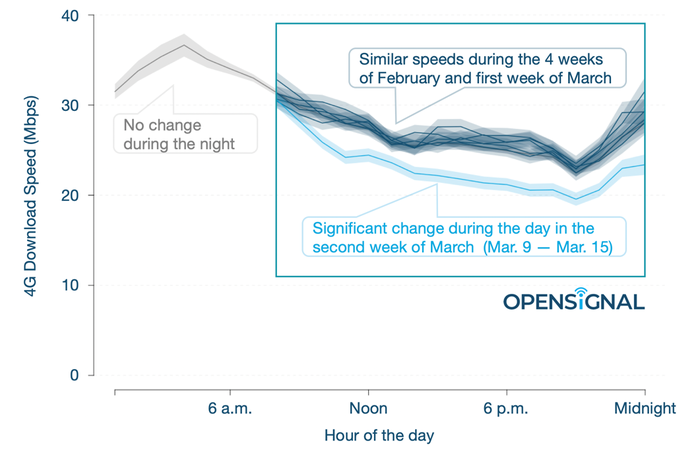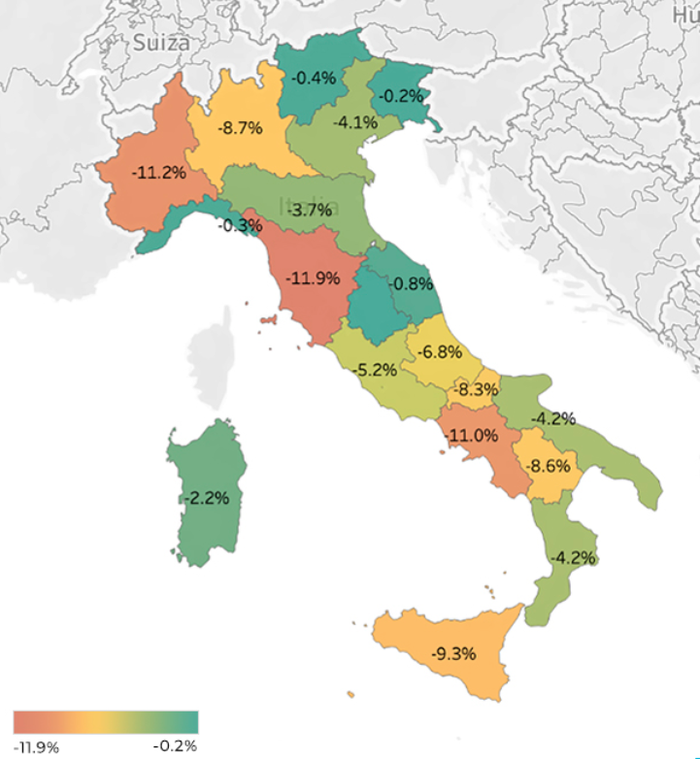Although Italian networks seem to be holding-up under the increased traffic, data from Opensignal and MedUX suggests there has been material levels of service degradation.
March 26, 2020

Although Italian networks seem to be holding-up under the increased traffic, data from Opensignal and MedUX suggests there has been material levels of service degradation.
What is worth noting it that while performance is seemingly suffering, there is not a threat of a full internet black-out in the impacted regions. Customers might just have to be a bit sympathetic to the circumstances and wait a bit longer.
Starting with the mobile networks, Opensignal measured the performance of the networks over a six-week period, starting at the beginning of February and finishing towards mid-March. Over the first five weeks, network performance was consistent, though from March 10 onwards, the beginning of the lockdown in the country, there was a very notable decline in 4G download speeds.

Although these numbers are still at speeds which might be tolerable, the longer the lockdown continues, the more people will be working from home, the greater the strain will be. This is far from a threat of the networks shutting down due to increased traffic, but it is a degradation which people will have to be aware of.
At the time of writing, the Italian Government has warned that while the COVID-19 impact was stabilising in the Northern regions, there were signs of increased effects in the Southern regions. Should there be a significant flare-up in the South, it would suggest the lockdown would continue across the country, instead of drawing to the end as some had been hoping.
Looking at fixed broadband networks, MedUX has done some analysis on the performance of Telecom Italia, Fastweb, Vodafone and Wind. Once again, the networks are holding pretty steadily, but performance has been impacted.
While there has been an impact on networks throughout the country, Piemonte, Lombardia, Toscana, Emilia-Romagna, Campania, and Sicilia have had a more material impact.

During the week beginning March 9, MedUX notes there has been up to a 50% increase in latency for FTTH during morning hours and up to 150% increase during afternoon hours. For FTTH and VDSL services, there was also a 15% decrease in compliance with contracted download speeds. The team also noted a 15% increase in web loading time and a 10–15% increase in the start-up and loading time of videos during the afternoon on the worst effected days.
Although these statistics are a slight dampener, the networks are still continuing to perform their duties. It might not be the lightening speeds which are promised in adverts, but these are extraordinary times where consumers might have to offer some flexibility to the telcos.
About the Author(s)
You May Also Like








.png?width=300&auto=webp&quality=80&disable=upscale)


_1.jpg?width=300&auto=webp&quality=80&disable=upscale)


.png?width=800&auto=webp&quality=80&disable=upscale)